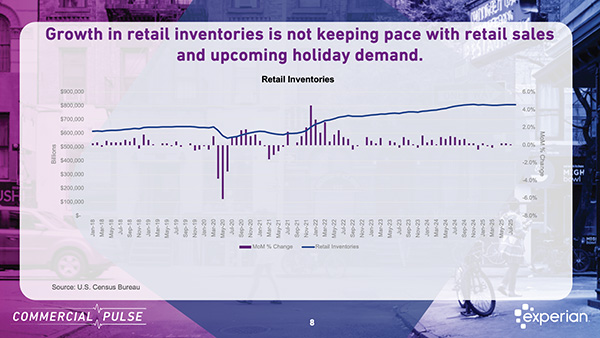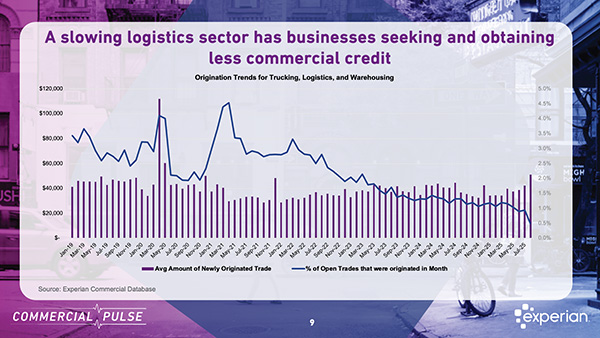Experian Commercial Pulse Report
Outstanding student loan debt in the U.S. has reached an all-time high of $1.63 trillion, and the ripple effects are being felt far beyond the personal finance arena. This unprecedented debt burden is now shaping the way many small business owners borrow, manage credit, and maintain financial stability.
Watch the Commercial Pulse Update
This week, the Commercial Pulse Report reveals a clear and growing link between student loan obligations and small business credit performance. For lenders, policymakers, and business leaders, this is a trend that can’t be ignored.
The Scale of the Challenge
Student loan balances have surged over 550% since 2003, rising from roughly $250 billion to more than $1.6 trillion in early 2025. Even during the pandemic-era repayment moratorium, when interest was frozen and payments paused, balances continued to grow — albeit modestly, by just 2.9%.
Policy shifts, such as the recently enacted One Big Beautiful Bill Act, are set to reshape the student loan landscape yet again — from changes in borrowing limits to the sunset of certain repayment plans. As these changes take effect, they will inevitably influence the personal financial health of millions, including business owners who are navigating both consumer and commercial credit obligations.
Student Loan Debt Among Business Owners
Experian’s data shows that approximately 5% of business owners currently carry student loan debt — up from 4% in 2019. While that may seem like a small slice of the business population, the growth rate is significant and points to a deeper shift in borrowing dynamics.
Also, since 2020, when some federal student loan repayments were forgiven or paused, business owners with student loans have been opening a larger share of new commercial credit accounts. In 2019, they represented 11% of new account openings. By 2025, that share had risen to 14%.
This suggests that temporary relief on personal loan payments may have freed up capacity for some entrepreneurs to access additional business credit — a trend worth watching as repayment requirements return in full force.
Risk & Performance Differences
Our data also shows clear performance gaps between business owners with and without student loans:
Delinquency rates are higher for those with unpaid government-backed student loans, especially among newer businesses. In 2023, 4% of new businesses with these loans had a 90+ day delinquency, compared to 3% for owners without student loans.
Credit risk scores tell a similar story: owners without student loans average a score of 58, versus 53 for owners with unpaid government loans.
Business stability also differs. Owners without student loans tend to have longer operating histories, higher commercial balances, and more active credit accounts — all indicators of stronger credit health. For lenders, this means personal debt load isn’t just a side note; it can be a leading indicator of small business credit behavior and repayment risk.
Implications for Lenders & Policymakers
As personal and commercial credit health become increasingly interconnected, financial institutions may need to refine their risk models to account for personal debt obligations like student loans.
- Underwriting: Integrating consumer credit insights into business credit assessments could help identify early warning signs.
- Portfolio management: Segmenting accounts by student loan status may reveal patterns in repayment behavior and growth potential.
- Policy considerations: As student loan repayment policies shift, small business access to credit , and their ability to maintain healthy repayment patterns could change in tandem.
The $1.63 trillion student loan burden isn’t just a consumer finance story — it’s a small business credit story, too. As more entrepreneurs carry this debt, the link between personal obligations and business performance will only grow stronger. Understanding and monitoring this crossover trend is essential for informed decision-making, whether you’re extending credit, managing a portfolio, or shaping policy.
For the full analysis, including all small business credit trends, read the latest Experian Commercial Pulse Report.
- ✔ Visit our Commercial Insights Hub for in-depth reports and expert analysis.
- ✔ Subscribe to our YouTube channel for regular updates on small business trends.
- ✔ Connect with your Experian account team to explore how data-driven insights can help your business grow.



